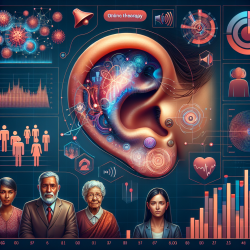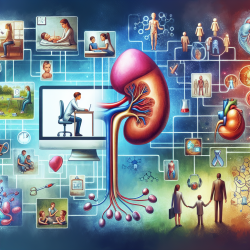In an ever-evolving educational landscape, harnessing the power of technology is not just a trend but a necessity. The research article "Computer-aided teaching and learning of basic elementary functions" by Chen, Wen, and Jin offers a groundbreaking approach to enhancing educational outcomes through computer-aided teaching and learning (CATL) systems. This blog will explore how practitioners can leverage these findings to improve their teaching strategies and foster better learning environments for students.
Revolutionizing Education with CATL
Traditional teaching methods, while effective, often fall short in engaging students and addressing individual learning needs. The CATL system, grounded in constructivist learning theory, provides a robust framework for making learning more interactive, enjoyable, and sustainable. According to the study, the CATL system improved student performance and interaction between teachers and students, achieving a remarkable 94.43% performance rate.
Key Findings from the Research
- Interactive Learning: CATL fosters a dynamic teacher-student relationship, enhancing the learning experience.
- Technological Aided Learning: Advanced tools and platforms support technological integration in education.
- Performance-Based Learning: CATL predicts student performance and suggests teaching methods based on required outcomes.
Implementing CATL in Your Classroom
To adopt CATL effectively, educators should focus on the following strategies:
- Emphasize Context: Relate learning to social and cultural contexts to stimulate associative thinking.
- Encourage Collaborative Learning: Foster group interactions to share knowledge and construct meaning collectively.
- Design a Supportive Learning Environment: Provide various information resources to support independent exploration and learning.
Practical Steps for Educators
Here are some actionable steps to integrate CATL into your teaching practices:
- Interactive Sessions: Use interactive quizzes and activities to measure and enhance understanding.
- Technological Integration: Incorporate smart boards, multimedia systems, and other digital tools to facilitate learning.
- Performance Monitoring: Regularly assess student performance and adjust teaching strategies based on data-driven insights.
Benefits of CATL
The research highlights several benefits of using CATL, including:
- Improved Academic Achievements: Students show significant improvement in their academic performance.
- Enhanced Understanding Abilities: Interactive and scalable teaching methods lead to better comprehension.
- Increased Teacher Satisfaction: Teachers find CATL beneficial, especially with larger student groups.
- Boosted Cognitive Skills: CATL activities enhance students' cognitive abilities, crucial for their overall development.
Conclusion
Incorporating CATL into your teaching practice can revolutionize the learning experience for both students and educators. By leveraging technology and data-driven insights, educators can create a more engaging, effective, and enjoyable learning environment. To read the original research paper, please follow this Computer-aided teaching and learning of basic elementary functions.










